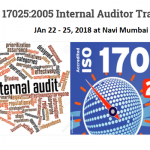Measurement Uncertainty
Measurement Uncertainty
For the uncertainty to be truly meaningful, it must address the entire measuring process, which may have uncertainties associated with factors such as equipment calibration, equipment resolution, operator skill, sample variation, and environmental factors. In many cases, sample variability and operator skill are the largest sources of uncertainty and they are often the only source considered when only the repeatability of a measurement is evaluated. However, a more thorough analysis considers other sources of uncertainty. As a minimum, in addition to the repeatability evaluation, an uncertainty analysis should consider the instrumentation/standard calibration and the resolution of the instrumentation.
The following a summary of the main steps in an uncertainty evaluation.
- Define the measured. (Determine exactly what needs to be measured.)
- Carry out the needed measurements.
- Evaluate the uncertainty due to the calibration standard and/or instrumentation used for the measurement.
- Evaluate resolution/readability of all instrumentation.
- Evaluate the repeatability.
- Identify and evaluate other sources of uncertainty.
- Prepare uncertainty budget documentation.
- Evaluate reasonability of budget.
- Determine combined standard uncertainty.
- Express the uncertainty in terms of uncertainty interval and the confidence level.
The first step controlling and characterizing uncertainty in a measurement is to define the measurand as explicitly as possible. It is very important to know exactly what requires measuring. If possible, determine the required level of precision and accuracy and whether they can be obtained with the available equipment. Verify that equipment is properly calibrated and/or perform user calibration check using NIST or ISO traceable reference standard. If systematic error (bias) is found to exist, record the value so that it can be eliminated with a correction to the measurement data. It is also important to ensure that test samples are identified to prevent mix-ups and to mark measurement locations to allow for repeat measurements of the same locations. Finally, make the measurements with care and correct for any bias that has been identified.
To evaluate sources of uncertainty due to factors such as sample variability, placement of the measurement instrument, and operator skill and consistency in making the measurement, a repeatability study should be conducted. A repeatability study is only useful when the measurement device is sensitive enough to produce scatter in the readings. Repeat readings that all produce the same value may improve overall confidence in the measurement, but they don’t provide any additional information about the probability density function. Therefore, the measurement must be sensitive enough to produce scatter in the reading so that the shape of the distribution can be determined and the standard deviation can be properly calculated. When repeat readings produce scatter that is distributed approximately equally about the mean value of the sample.
An uncertainty budget is simply a way of organizing and summarizing the uncertainty analysis in tabular form. An uncertainty budget lists all the contributing components of uncertainty and these components are used to calculate the combined standard uncertainty for the measurement.
Other source of uncertainty will likely be small compared to the instrumentation and repeatability evaluations discussed above, but all identifiable sources of uncertainty should be addressed. Other possible sources of uncertainty may include: parallax, thermal expansion and other temperature effects, voltage drift and etc.
Once the standard uncertainties for all the sources of uncertainty in a measurement or set of measurements have been calculated, then the combined standard uncertainty can be calculated. The combined standard uncertainty is the total uncertainty in the measurement and can come from a combination of type A and B evaluations.
The results of the measurement and uncertainty analysis should be reported in terms of the uncertainty interval and the confidence level.
Uncertainty contributions from both Type A and Type B evaluations may be combined as long as they are expressed in similar terms before they are combined. Thus, all the uncertainties must be expressed as one standard uncertainty and in the same units.
For the uncertainty to be truly meaningful, it must address the entire measuring process, which may have uncertainties associated with factors such as equipment calibration, operator skill, sample variation, and environmental factors. When a measurement has more than one identifiable source of measurement uncertainty, then the combined standard uncertainty (uc) must be calculated.
Many physical quantities are not determined from a single direct measurement but instead are calculated by combining two or more separate measurements. Therefore, it is important to understand how measurement uncertainty propagates when mathematical operations are performed on measured quantities, so that a final combined uncertainty can be calculated.
The equations in the table above or only valid if the contributing uncertainties are not correlated. Factors leading to measurement error are often independent, but sometimes they are correlated of inter-related.
An uncertainty budget is simply a way of organizing and summarizing the uncertainty analysis in tabular form. An uncertainty budget lists all the contributing components of uncertainty and these components are used to calculate the combined standard uncertainty for the measurement.






